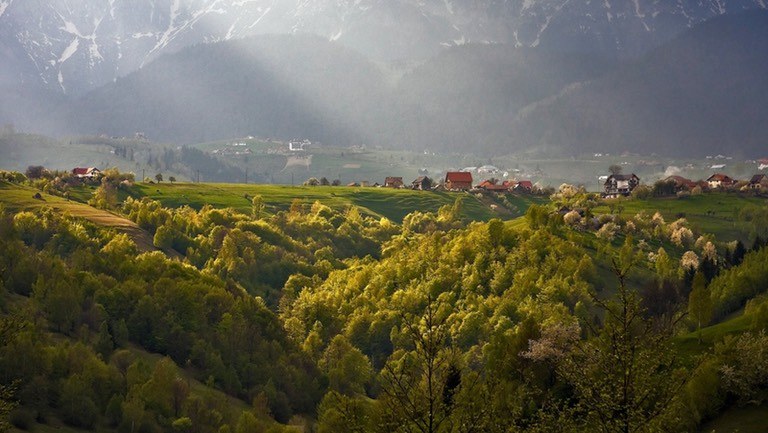Piatra Craiului is a mountain range located in southwestern Carpathians, but which belong to them, being the northeast them. The maximum altitude is reached by the peak “La Om”, known as Baciului Peak, 2238 m. Massif became a nature preserve on March 28, 1938. The Council of Ministers made the decision “due to the unique nature of the mountain where there are rare species like Dianthus callizonus, Hesperis nivea, Minuatia Transylvania, Leontopodium alpinum, and due the beauty of the landscape”.
Inside the park there is a protected zone of 6053.8 hectares (2619ha in Brasov, 3434.8 ha in Arges). The area with strict protection also includes 4 other karst areas, named Zarnestilor’s Keys (Prapastiile Zarnesti) in Brasov and Dambovicioara keys, Brusturetului and Dâmbovitei Gorges, located in Arges county, in total 1.5 ha of nature reserve.
Piatra Craiului houses a large number of butterfly species, up until now been identified over 216 species some rare or endemic.
From the approximately 100 species of mammal fauna of the country, over 40% lives in Massif.
So far it was identified 21 species of bats, who’s housing in caves or hollows of old trees in the park. From these, most are in the category of strictly protected species under the Berne Convention. National Park also hosts a rich population of large carnivores: bear – Ursus arctos; wolf – Canis lupus; lynx – Lynx lynx.
The park identified a total of 1170 species and subspecies of plants. A total of 181 species are included in the “Red List of superior plants in Romania” as endemic, rare or vulnerable. From here we can see the great importance of Piatra Craiului National Park for conservation of flora, especially the Carpathian endemic species conservation.
Among these species are: Garofita Pietrei Craiului (Dianthus callizonus) floristic symbol of the mountain and here is the only place in the world where this plant grows (a endemic species for Piatra Craiului); yew (Taxus baccata); angelica (Angelica arhangelica); crosswort (Nigritella nigra and N. rubra); yellow poppy (Papaver alpinum ssp. corona-sancti-Stefani); Wool (Linaria alpina); Queen or Edelweiss flower (Leontopodium alpinum); marigolds (Trolius europaeus); peony mountain (Rhododendron mytifolium), wild gladiolus (Gladiolus imbricatus), Gentiana lutea (Gentiana lutea), white ivy (Daphne blagayana), spurge (Daphne cneorum).

